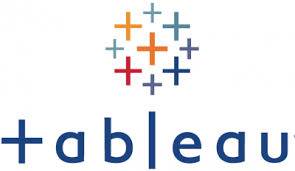Tableau Architecture and Server Components
Tableau Server is designed in a way data tiers. It connects clients from desktop, mobile, and web. Tableau Desktop is a robust data visualization tool. It is highly available and secure. It can run both physical machines. It is a multi-user, multi-process and multi-threaded system.
- Tableau Server Architecture:
The various layers used in Tableau server are given in the following architecture diagram.

- Data Server:
The primary component of Tableau Architecture is the data sources it can connect to it. Tableau can connect to multiple data sources. It can connect to a database, excel file, and a web application all at the same time. Tableau can connect data from heterogeneous environments. It can blend the data from multiple data sources.
- Data Connecters:
The data connectors provide an interface to connect the external data sources to the Tableau Data Server. Tableau has an in-built ODBC/SQL connector. This ODBC connector can connect to any database without using their native connector. Tableau has an option to select both lives and extract data. Based on the usage, one can be easily switched between extracted and live data.
Components:
Application Server VizQL Server Data Server
- Application Server:
It is used to provide authentications and authorizations. It handles the administration and permission for web and mobile interfaces. It assures security by recording each session-id on Tableau Server. The administrator can configure the default timeout of the session on the server.
- VizQL:
It is used to convert the queries from the data source into visualizations. It sends the query directly to the data source and retrieves information in the form of images. Tableau Server creates a cache of visualization to reduce the load time.
- Data Server:
It is used to manage and store the data from external data sources.it is a central data management system. It provides metadata management, data security, data storage, data connection, and driver requirements. The data source could extract data as well as make live connections to external data sources.
- Gateway/Clients:
The gateway channelizes the requests from users to Tableau components. When the client makes a request, it is forwarded to the external load balancer for processing.
How Tableau Work?
Tableau connects and extracts the data stored in various places. It can pull data from any platform imaginable. A simple database as an excel, pdf, to a complex database like Oracle, a database in the cloud such as Amazon Web services, Microsoft Azure SQL database, Google Cloud SQL and various other data sources can be extracted by Tableau. Anyone with more knowledge of Tableau or completed Tableau certification may use Tableau as a data visualization tool.
When Tableau is launched, ready data connectors are available which allows you to connect to any database. Depending on the version of Tableau that you have purchased the number of data connectors supported by Tableau will vary.
The pulled data can be either connected live or extracted to Tableau’s data engine, Tableau Desktop. This is where the data analyst, data engineer work with the data that was pulled up and develop visualizations. The created dashboards view the file using Tableau Reader.
The data from the Tableau Desktop can be published to the Tableau Server. This is an enterprise platform where collaboration, distribution, governance, security model, automatic features are supported. With the Tableau Server, the end-users have a better experience in accessing the files from all locations be it a desktop, mobile or email.
Why Tableau is Used?
When working in excel, we first manipulate the data that is present and then the visualization such as the different charts, graphs are created manually whereas, in Tableau, the data is visualized from the beginning. The perfect visualization tool used for analysis. Its usage is an easy and quick representation of big data which helps in resolving the big data issues. Extensive options to secure data without scripting. Security features like row-level security and permission are inbuilt. Ii integrates with over 250 applications. It can explore data without even knowing the answer that you want. With the in-built features like data blending and drill-down, you will be able to determine the variations and data patterns.
Advantages:
- Data Visualization
- Quick create interactive visualizations Easy to implementation
- Can handle large amounts of data Use of other scripting languages
Disadvantages:
- Scheduling or notification of reports No custom visual imports
- Custom formatting in tableau Static and single value parameters
- Screen resolution on tableau dashboards Limited data preprocessing
- Scaling and pricing for the enterprise.




Leave Comment